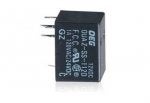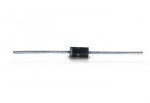In my quest for saving electrical power for running some of my favorite goodies, I decided to do an LED conversion.
I had changed my front signals in '88 to three wire turn/running lights so I
purchased two amber 1157 LED and two amber 1156 LED bulbs as well as a red 1157 LED for the tail/brake.
Converting the brake/tail was a simple plug and ply operation.
The signals was another issue. I changed out the flasher for an electronic one. Car Quest had one on the shelf. Simple plug and pay there.
Putting the rear 1156 in was also straight forward. Had I left the incandescent bulbs up front, I could have called it good right there. Putting the 1157 LED bulbs up front, I had the notorious four light flash. I had though about doing a two indicator system but decided to try an LED indicator bulb. A quick run up to Auto Zone for a pack of 194 LED bulbs solved the cross connection issue.
![Image]()
If I had the OE front signals it would have been finished but the 1157 LED bulbs threw me yet another curve. With the running lights the signals did not want to flash. They would modulate but not fully flash.
When I disconnected the wires for the front running lights there was no improvement. I noticed that if I grounded the running light wires from the front signals the signals would flash correctly.
That's all well and good but I like my front running lights.
After studying the schematic for the Rebel I decide to install a relay so I could have my running lights. I chose under the seat for the relay.
Radio Shack micro relay part number 275-241 looked to be a good choice. Tiny and robust it would tuck easily in to the area above the airbox under the seat. Soldering on the connections isn't for the faint of heart but the compact relay was worth the effort.
![Image]()
Putting a nice shrink wrap conduit with the two running light wires in it, the run along the main harness was very easy. I tapped in to the tail light circuit at the fender harness connection and also tapped in to both signals.
Powering the relay meant using the taps from both sides of the turn signal.
To prevent back feed and end up with the four flashing signal problem again, a pair of diodes for the relay power made for a quick and easy fix. I used 3 amp rectifier diodes from Radio Shack part number 276-1141 . They come two in a pack and two is what I needed.
![Image]()
When the signals are on, the relay connects the two running light wires to ground. The signals and indicator function just as they should.
When the signal is canceled, the relay switches back to the lower output front running lights powered by the tail light wire.
Since the 194 LED bulbs came in a two pack, I replaced the neutral indicator with the second one from from the pack.
The only downside with that is the amber 194 LED bulb in the neutral indicator is the amber shows through the green lens.
Still, that's livable.
The relay has a slight capacitance in its energizing coil, just enough so that it will stay latched during operation as long as the battery voltage and charging system voltage are at good.
One side effect of the relay is if battery voltage drops, the relay starts to click with the flasher blinking the opposite side running light.
I just figure I'll use that to judge my power draw when using heated gear!
I had changed my front signals in '88 to three wire turn/running lights so I
purchased two amber 1157 LED and two amber 1156 LED bulbs as well as a red 1157 LED for the tail/brake.
Converting the brake/tail was a simple plug and ply operation.
The signals was another issue. I changed out the flasher for an electronic one. Car Quest had one on the shelf. Simple plug and pay there.
Putting the rear 1156 in was also straight forward. Had I left the incandescent bulbs up front, I could have called it good right there. Putting the 1157 LED bulbs up front, I had the notorious four light flash. I had though about doing a two indicator system but decided to try an LED indicator bulb. A quick run up to Auto Zone for a pack of 194 LED bulbs solved the cross connection issue.
If I had the OE front signals it would have been finished but the 1157 LED bulbs threw me yet another curve. With the running lights the signals did not want to flash. They would modulate but not fully flash.
When I disconnected the wires for the front running lights there was no improvement. I noticed that if I grounded the running light wires from the front signals the signals would flash correctly.
That's all well and good but I like my front running lights.
After studying the schematic for the Rebel I decide to install a relay so I could have my running lights. I chose under the seat for the relay.
Radio Shack micro relay part number 275-241 looked to be a good choice. Tiny and robust it would tuck easily in to the area above the airbox under the seat. Soldering on the connections isn't for the faint of heart but the compact relay was worth the effort.
Putting a nice shrink wrap conduit with the two running light wires in it, the run along the main harness was very easy. I tapped in to the tail light circuit at the fender harness connection and also tapped in to both signals.
Powering the relay meant using the taps from both sides of the turn signal.
To prevent back feed and end up with the four flashing signal problem again, a pair of diodes for the relay power made for a quick and easy fix. I used 3 amp rectifier diodes from Radio Shack part number 276-1141 . They come two in a pack and two is what I needed.
When the signals are on, the relay connects the two running light wires to ground. The signals and indicator function just as they should.
When the signal is canceled, the relay switches back to the lower output front running lights powered by the tail light wire.
Since the 194 LED bulbs came in a two pack, I replaced the neutral indicator with the second one from from the pack.
The only downside with that is the amber 194 LED bulb in the neutral indicator is the amber shows through the green lens.
Still, that's livable.
The relay has a slight capacitance in its energizing coil, just enough so that it will stay latched during operation as long as the battery voltage and charging system voltage are at good.
One side effect of the relay is if battery voltage drops, the relay starts to click with the flasher blinking the opposite side running light.
I just figure I'll use that to judge my power draw when using heated gear!









